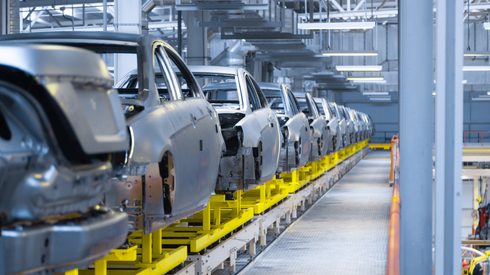While downstream EV demand is slowing in the absence of government-backed incentives, which had fueled a rapid growth in the industry, market participants have been pinning hopes that the market could see some recovery in the second half of this year.
“Demand is definitely on the rise, though it’s not felt that obvious,” a precursor material producer source said, adding that the improvement is more likely driven by restocking demand.
Fastmarkets’ most recent price assessment for nickel sulfate, min 21%, max 22.5%; cobalt 10ppm max, exw China, was 32,000-33,000 yuan ($4,470-4,609) per tonne on June 9, up by 500 yuan per tonne from 31,500-32,500 yuan per tonne on June 2.
The price has been mostly rangebound at the prevailing level in recent weeks, but has halted a months-long losing streak since March this year.
In the seaborne East Asia market, prices for nickel sulfate were slightly higher due to differences in input costs, but demand still remains uncertain.
Fastmarkets assessed the nickel sulfate premium, cif Japan and Korea at $1,000 per tonne on June 9, unchanged from a week earlier.
Fastmarkets calculated the price for nickel sulfate, cif Japan and Korea at $4,917 per tonne on June 9, up from $4,900 per tonne a week prior.
Precursor producers in China were heard to be resuming production partially, which, combined with restocking demand, went some way to lend support to the market, according to sources.
Nonetheless, market participants remained largely cautious.
“It seems more because of restocking activities, instead of any actual improvement,” a precursor producer source said, lamenting modest rebound in prices so far.
LFP demand shows better recovery
The demand story splits in terms of nickel–cobalt–manganese (NCM) and lithium-iron-phosphate (LFP) types of batteries, with the latter showing a more robust recovery in the EV market.
NCM batteries accounted for 32.9% of the total 56.6 Gigawatt hours (GWh) of batteries produced in China in May, an increase of 11.9% year on year and 5.8% month on month. By comparison, LFP batteries took the bigger market share with 66.9% of produced batteries that month, a jump of 96.7% from a year earlier and increasing by 29% from the month before.
Improved production rates of LFP battery cathode during May translated into rising demand for lithium carbonate, while multiple cathode producers are planning to raise production rates even further this month.
“Downstream lithium iron phosphate battery cathode production has recovered in May, especially compared with April, when production fell to its lowest so far this year,” a Chinese cathode producer source told Fastmarkets.
Fastmarkets’ price assessment for lithium carbonate 99.5% Li2CO3 min, battery grade, spot price range exw domestic China was 310,000-330,000 yuan per tonne on June 8, up by 10,000 yuan per tonne from 300,000-320,000 yuan per tonne on June 1.
This is in comparison to the slow recovery in lithium hydroxide, which is used in NCM batteries.
“Compared to the LFP battery, the NCM battery is still slowly recovering and no material improvement in the demand for upstream battery metals like lithium hydroxide has happened,” a Chinese lithium producer source said.
Multiple market participants said that lithium hydroxide prices were mainly driven higher by the rising lithium carbonate market.
Fastmarkets’ price assessment for lithium hydroxide monohydrate LiOH.H2O 56.5% LiOH min, battery grade, spot price range exw domestic China was 300,000-352,000 yuan per tonne on June 8, up by 10,000-32,000 yuan per tonne from 290,000-320,000 yuan per tonne a week earlier.
Mixed hydroxide precipitate (MHP) rises pre-emptively
With battery metals showing mixed signals in terms of a demand recovery, more bullish sentiment was briefly palpable in the upstream raw material market, with offers reported above 80% of the London Metal Exchange nickel cash official price for nickel MHP in the past two weeks.
“When you have rising demand for nickel cathode batteries, you see rising prices for the feedstocks,” a trader said.
Alongside a recent drop of nickel prices on exchange contracts such as the LME, producers were betting on a better demand recovery, which is said constraining the feedstock supplies. This is despite a lukewarm response from consumers.
Received bids were submitted at the low 70s%, leading to a wide bid-asking spread, with deals and deals heard reported up to the mid-70s%.
As a result, Fastmarkets assessed the nickel mixed hydroxide precipitate payable indicator, % London Metal Exchange, cif China, Japan, and South Korea at 72-75% on June 9, down from 75-78% on June 2.
“Spot inquiries were picking up at the start of the month but, the market was soon cooling down over this week,” a second trader said, citing a fragile demand recovery.
Elsewhere, bulk of the market participants, particularly buyers, were heard opting for MHP prices based on LME due to the arbitrage with the other pricing method.
Fastmarkets assessed the nickel mixed hydroxide precipitate outright price, cif China, Japan, and South Korea at $14,500-14,800 per tonne on June 9, unchanged week on week.
Keep up to date with global market insights and predictions for 2023 and beyond with our NewGen forecasts.





